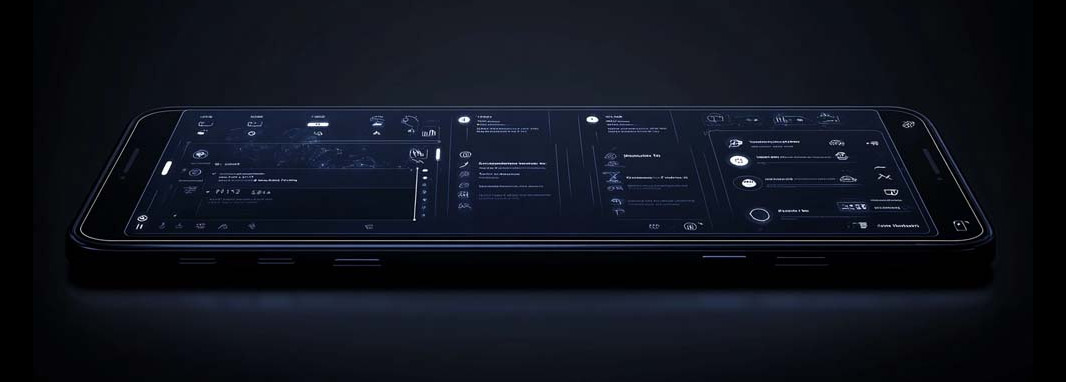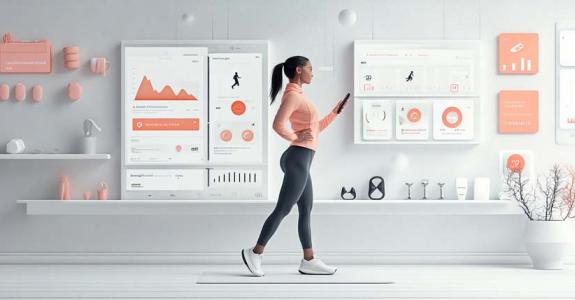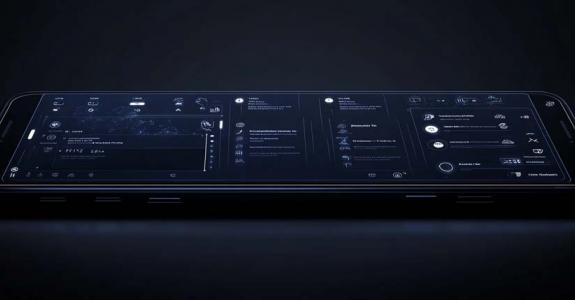Design isn’t just about how your fitness app looks — it’s about how it feels to use. A polished UI builds trust at first glance, while thoughtful UX helps users stay motivated, build habits, and come back daily.
In a competitive market where users abandon apps after one bad experience, great design is not an extra — it’s a core retention tool.
Why it matters:
UX = consistency → smooth flow, reduced friction, habit-forming journeys
UI = trust → clear visuals, intuitive structure, strong first impression
This article is for:
🎨 Product & UI/UX designers
🧪 Product managers and founders
🚀 Startup teams building fitness apps from scratch
1. Fast & Frictionless Onboarding
The first session is everything. If users don’t understand the value or get to their first workout quickly, they’ll likely never come back.
Great onboarding removes barriers and delivers instant clarity and momentum.
🔑 Key principles:
- Communicate value early – show what the app will do for them, not just who you are
- Minimize steps – goal → plan → start workout (ideally in under 60 seconds)
- Guest mode – let users explore without creating an account
- Smart defaults – pre-select goals or plans based on simple choices (“Lose weight”, “15 min/day”)
💡 Interface tips:
- Progress bar for setup (4 steps or less)
- Motivational microcopy (“Let’s do this 💪”)
- Visual plan previews before signup
- Skip / “Remind me later” options to reduce drop-off
2. Simplicity & Focus-Driven UI
Clutter kills momentum. A fitness app should help users start, train, and track — not distract them with complexity.
Clear layouts and focused design reduce cognitive load and boost conversion.
🎯 Design principles:
- One action per screen – one button, one decision, one goal
- Large, tappable buttons – perfect for in-motion use
- Clear navigation – tab bar with 3–5 core areas max
- Dark mode & scalable fonts – better usability in different contexts (gym, night, outdoor)
💡 Interface tips:
- Use bold CTAs (“Start Workout”, “Track Progress”)
- Contrast for important actions, muted tones elsewhere
- Avoid icons without labels — clarity > elegance
- Keep screens clean during workout (timer + next move only)
3. Flow-Friendly Workout Mode
Great fitness apps do more than deliver content — they help users enter and stay in flow.
That means reducing distractions, guiding actions seamlessly, and allowing full focus during training.
🧩 What supports flow:
- Distraction-free workout screen – no pop-ups, no nav bar, no clutter
- Big timer, current + next move only
- Audio and vibration cues – no need to look at the screen
- Auto-preload of next exercise or set
🔧 Optional Enhancements:
- Do Not Disturb toggle during sessions
- Screen customization: light/dark mode, audio-only, rep counter vs. stopwatch
- Quick exit + auto-save if user stops mid-workout
4. Personalization That Feels Personal
Users don’t want “a fitness app.” They want their fitness app — one that adapts to their goals, habits, and progress.
Smart personalization improves both motivation and retention by making every screen feel relevant.
👤 What to personalize:
- Goals & preferences at onboarding – weight loss, muscle gain, time per day
- Adaptive workout plans – adjusted based on performance and feedback
- Recommended content – “Suggested for you”, “Resume your plan”, “Next level unlocked”
- Progress at a glance – make streaks, badges, and milestones visible on the home screen
💡 Design details:
- Show weekly or monthly goal completion in visual form
- Use user name or pronoun (“Nice work, Anna!”)
- Adaptive tone — gentle vs. pushy, depending on user behavior
5. Visualizing Progress
Motivation thrives on visible results. Users need to see that their efforts matter — not just feel it.
Visual progress creates a sense of achievement, builds habits, and keeps people coming back.
📊 Core elements of visual feedback:
- Graphs and trend lines – weekly/monthly comparisons (e.g., time trained, calories burned)
- Badges & achievements – milestone unlocks, consistency rewards
- Streak counters – “You’ve trained 5 days in a row”
- Performance insights – “+15% endurance since last month”
🏠 Dashboard & Daily View
- “Today” screen – planned session, mood check-in, streak status
- Results dashboard – clear view of goals hit, stats, and wins
- Comparison to past self, not to others – focus on personal growth
6. Microinteractions & Light Gamification
Fitness is hard. Design should make it feel fun, rewarding, and alive.
With subtle animations, sounds, and progress mechanics, you can turn effort into satisfaction — and habit into engagement.
✨ Microinteractions
- Goal reached → animation + sound/vibration
- Badge unlocked → confetti, pulse effect, glow
- Swipe complete → tactile feedback or checkmark motion
- Day streak → pop-up with “Keep it up!” nudge
🎯 Gamification Layer
- XP points, levels, streaks
- Friendly challenges – “Train 3x this week”
- Weekly rewards for consistency
- Progress bars toward personal targets
⚖️ Balance matters
- Keep it light – avoid game overload
- Let users opt in to gamified elements
- Tie rewards to behavior, not just clicks
7. Social Features That Motivate, Not Distract
Fitness becomes more powerful when it’s shared.
Social features can boost motivation, accountability, and retention — but only if they’re integrated carefully and don’t overwhelm solo-focused users.
👥 Core Social Interactions
- Likes, comments, emojis on completed workouts
- Friends’ progress in your feed or dashboard
- Invite friends to join a challenge
- Celebrate together: “You and Alex completed 5 workouts this week!”
🏆 Shared Goals & Group Challenges
- “Burn 5000 kcal together this week”
- Leaderboards (optional visibility)
- Team-based streaks or missions
🧘 Light and Optional
- Allow users to turn social features off
- Keep private modes for individualists
- Notifications only when relevant or triggered
8. Device & Language Adaptation
Your app isn’t just used on one screen — and your users don’t all think the same way.
Adapting for devices and cultural context ensures a smoother, more inclusive experience.
📱 Multi-Device UX
- Mobile-first design – thumb-friendly, vertical flow
- Tablet view – more content per screen, split layouts for workouts
- TV apps (e.g. Apple TV) – focus on visuals, voice control, big timers
- Wearables – glanceable stats, quick controls, minimalist workout view
🌐 Localization & Culture
- Full text translation – workouts, labels, onboarding
- Adjust content (e.g., training styles, models) to regional norms
- Be sensitive to tone, gestures, and visuals (e.g., no high fives in some cultures)
- Date, time, unit systems: auto-adapt (lbs/kg, miles/km)
9. Continuous UX Improvement
Even the best design is never “done.” User habits evolve, expectations grow, and competitors adapt — which means your app must too.
Iterate or fade.
🧪 Test What Matters
- A/B testing: buttons, layouts, copy, CTAs
- Try: “Start Now” vs. “Train Today,” small UI shifts
- Usability testing with real users – what confuses, delays, frustrates
📬 Feedback Loops
- In-app prompts: “Was this easy to use?”
- App Store reviews monitoring and reply
- Quick polls after workouts (“How did that feel?”)
🧭 Behavior Analytics
- Track tap heatmaps, drop-off screens, rage clicks
- Tools: Hotjar, UXCam, Firebase Analytics
- Prioritize changes by impact, not opinion
⚖️ Evolve Without Losing Familiarity
- Keep core patterns stable (e.g., tab bar, key flows)
- Highlight changes: “We’ve improved your dashboard”
- Avoid redesign for the sake of aesthetics
Conclusion: Good Design Retains, Great Design Engages
Design isn’t decoration — it’s a strategy. A fitness app with great UX doesn’t just look good — it motivates, guides, and adapts.
It reduces friction, builds habits, and makes users feel supported from day one.
🧠 Remember:
- UX is not a phase — it’s a continuous process
- Small design choices = big retention outcomes
- The best apps feel effortless, intuitive, and personal
📚 Want to go deeper?
- Must-Have Features for a Fitness App
- How to Build a Successful Fitness App: Step-by-Step Guide
- How to Define and Analyze Your Target Audience
- How to Promote a Fitness App and Get Your First 10,000 Users
📎 Need expert help with UI/UX design or full product development?
Explore ourFitness App Design & Development Services at Zfort — where great






